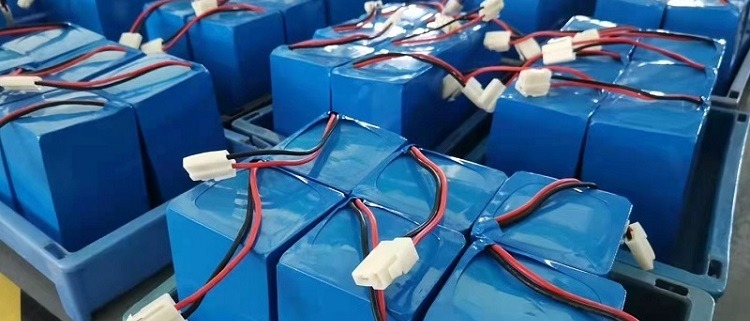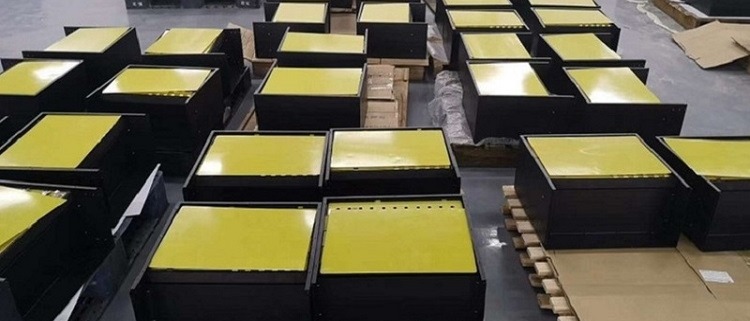Charge a Marine Battery: Step-by-Step Guide
Table of Contents
- Charge a Marine Battery: Step-by-Step Guide
- Understanding Marine Batteries
- Preparing to Charge Your Marine Battery
- Step-by-Step Guide: How to charge a marine battery
- Best Practices for Marine Battery Maintenance
- Conclusion
- FAQ
- Hot Resarch
- Australia Customer 500pcs 12v 26ah Solar Street Light Battery Ready For Shipment
- UPS power supply correct use method and maintenance
- France Customer 300pcs 48V 80Ah Battery Lithium For Electric Vehicle The Test Is Complete Ready To Seal The Shell
Marine batteries are the lifeblood of any boat—they power your engine, lights, gauges, and all the essential onboard electronics. Without a healthy battery, your boat is a pretty shell on the water. In this article, we dive into the burning question: how do I charge a marine battery? We’ll explore everything from the ins and outs of battery types to a step-by-step guide on charging. Plus, we’ll compare the advantages of a marine li ion battery with those of traditional marine deep cycle batteries. Let’s get started on this exciting journey to keep your boat powered and your adventures safe!
Understanding Marine Batteries
1. Types of Marine Batteries
Not all marine batteries are created equal. When it comes to powering your boat, you typically have three choices:
- Starting Batteries: These provide that quick, powerful burst of energy to get your engine running, but they’re not built for long-term power.
- Deep Cycle Batteries: Designed for sustained power delivery, these batteries keep your lights, electronics, and other accessories humming for hours.
- Dual-Purpose Batteries: These offer a blend of starting and deep cycle capabilities, which can be handy on smaller vessels with limited space.
Most boaters prefer marine deep-cycle batteries for extended use and reliability. These batteries handle deep discharges better, ensuring their boats stay powered even during extended trips.
2. Battery Chemistry and Technology
Battery chemistry plays a pivotal role in performance and longevity. Traditional chemistries—like lead-acid, AGM, and gel—have long been the go-to options. However, a modern contender is changing the game: the marine li ion battery.
Why choose a marine li ion battery? Because it’s lightweight, lasts significantly longer, and requires minimal maintenance compared to conventional batteries. Think of it as upgrading from an old clunker to an award-winning sports car in the world of batteries. This cutting-edge technology improves performance and enhances safety and efficiency, making it a popular choice among serious boaters.
Learn more about lithium-ion battery technology on Wikipedia.
Preparing to Charge Your Marine Battery
Before you begin the charging process, a little preparation goes a long way toward ensuring safety and efficiency.
1. Assessing Your Battery’s Condition and Type
First, give your battery a thorough once-over. Check its age, inspect for any signs of corrosion, and verify the battery type. Understanding whether you’re dealing with a marine li ion battery or deep cycle batteries is crucial—it influences which charger to use and how you’ll maintain it. A well-maintained battery lasts longer and performs better when you charge a marine battery.
2. Choosing the Right Charger
Next up is selecting the correct charger. You generally have two main options:
- Onboard Chargers: Permanently installed on your boat, these chargers make it super convenient to power up as long as you have access to a standard outlet.
- Portable Chargers: These allow you to charge your battery wherever you are, which is ideal for smaller boats or when space is at a premium.
Make sure the charger you choose matches your battery’s chemistry and voltage. This step is especially important for those opting for a marine li ion battery or deep cycle batteries—using the wrong charger can lead to underperformance or even damage.
3. Safety Precautions Before Charging
Safety should always be your top priority. Here are some key precautions:
- Work in a Safe Environment: Charge your battery in a well-ventilated area and ensure the temperature is within the manufacturer’s recommended range.
- Clean Battery Terminals: Dirty or corroded terminals can interfere with the charging process, so give them a good clean before you connect anything.
- Gear Up: Wear protective gear such as gloves and eye protection to prevent mishaps.
- Follow Manufacturer Guidelines: Always adhere to the specific recommendations provided by your battery and charger manufacturers.
By taking these simple steps, you will ensure your safety and optimize the performance and lifespan of your battery.
Step-by-Step Guide: How to charge a marine battery
Let’s get into the nitty-gritty of charging your boat’s power source. Follow these steps, and you’ll power up like a pro in no time!
1. Cleaning and Inspecting Battery Terminals
Before you plug anything in, clean your battery terminals. Dirty or corroded terminals can prevent your charger from doing its job, and no one wants a slow charge on a hot day!
- Tip: Mix some baking soda with water, scrub gently with a soft brush, and wipe dry.
- Why It Matters: Clean connections ensure that every bit of energy flows efficiently when you charge a marine battery.
2. Connecting the Charger
Now, let’s hook everything up:
- Positive (Red) Cable: Firmly attach this to the positive terminal.
- Negative (Black) Cable: Connect it securely to the negative terminal.
Double-check your connections, whether using a smart charger that adjusts the current automatically or a trusty manual charger. This step is vital, especially when working with a marine li ion battery or marine deep cycle batteries. Once the cables are locked in, plug in your charger and power it up. Easy as pie, right?
3. Monitoring the Charging Process
Keep an eye on your battery as it charges—this is where modern tech shines:
- LED Indicators: These give you a quick look at the charge level.
- Smart Apps & Timers: Many chargers have apps or built-in timers to let you know when you’re full.
By actively monitoring, you prevent overcharging and ensure your battery gets the right amount of juice.
4. Disconnecting the Charger Safely
When your battery is fully charged, it’s time to disconnect—but do it safely:
- Unplug the Charger: Always start by unplugging the charger from the wall.
- Remove the Negative Cable: Disconnect the black cable first.
- Disconnect the Positive Cable: Finally, remove the red cable.
Following this order helps prevent accidental short-circuits and keeps your battery in shape.
Best Practices for Marine Battery Maintenance
Regular maintenance keeps your battery performing like a champ. Here’s how to keep those power levels up!
1. Maintenance Tips for Prolonging Battery Life
- Routine Inspections: Check for any signs of corrosion or wear on the terminals.
- Clean Regularly: A little cleaning goes a long way in ensuring your connections are solid.
- Water Topping: Top up with distilled water when needed for lead-acid batteries.
By following these habits, you’ll always be ready to charge a marine battery and hit the water confidently.
2. Optimizing Charging Cycles
Different batteries have different needs:
- For a marine li ion battery: Enjoy the benefits of minimal maintenance and the ability to handle deeper discharges.
- For marine deep cycle batteries: Stick to regular, shallow discharges to keep them healthy over the long haul.
Tailoring your charging cycle to the specific battery type maximizes performance and extends lifespan.
3. Troubleshooting Common Issues
Even the best-maintained batteries can run into issues. Watch out for:
- Overcharging: This can overheat your battery and cause damage.
- Undercharging: Leaves your battery underpowered.
- Terminal Corrosion: Hinders efficient energy transfer.
If you notice any problems, check your charger settings and ensure you use the right equipment for your battery type.
Conclusion
1. Recap of Key Points
We’ve broken down how to charge a marine battery step by step—from cleaning and connecting to monitoring and safe disconnection. Each stage is crucial for keeping your boat’s power system in peak condition.
2. Final Tips for Maintaining Both Marine li ion battery and marine deep cycle batteries
Whether you opt for the cutting-edge marine li ion battery or the reliable marine deep cycle batteries, proper care and regular maintenance are your best friends. Tailor your charging habits to your battery’s specific needs, and you’ll enjoy award-winning performance on every trip.
3. Encouragement to Follow Best Practices for Reliability on the Water
Stick to these best practices, and you’ll be cruising with confidence. Keeping your battery in prime condition means fewer hassles and more time enjoying your time on the water. Let’s keep those adventures rolling, shall we?
For more detailed battery care tips and industry insights, check out reputable sources like the U.S. Department of Energy or Wikipedia’s battery technology page. Happy boating!
FAQ
1. Can you charge a marine battery with a regular charger?
While you technically can, it’s not recommended. Marine batteries require a charger that matches their specific chemistry and voltage. A regular charger may not provide the proper charging profile, leading to undercharging, overcharging, or even damage over time.
2. What is the best way to charge a boat battery?
The best way is to use a charger specifically designed for your battery type. Follow a step-by-step process: clean and inspect the terminals, connect the positive and negative cables correctly, monitor the charging process using bright indicators, and disconnect safely when fully charged. This ensures efficiency and longevity.
3.What kind of charger do I need for a marine battery?
You need a charger that is tailored to your battery’s chemistry—whether it’s a marine li ion battery or marine deep cycle batteries. Look for chargers with the correct voltage, charging algorithm, and safety features like automatic shut-off and intelligent monitoring for optimal performance.
Hot Resarch
Marine Battery Battery Manufacturer Lithium Battery
Hello
Australia customer 500pcs 12v 26ah solar street light battery,ready for shipment.
This batch of 12v 26ah solar battery is used in the solar street light project .
The customer has more than 5 years of production, research and development, and sales experience in the solar street light industry.
If you have any 12v 26ah solar battery is used in the solar street light projects , please don’t hesitate to call MANLY here or email at [email protected].
The use and maintenance of UPS power supply should follow the following 10 points:
1. Correct switch sequence
In order to avoid damage to the UPS caused by the inrush current generated by the load at the moment of start-up, the UPS should be supplied with power first to make it in the bypass state, and then the loads should be turned on one by one, so as to avoid the impact of the load current on the UPS. The service life of UPS is extended. The shutdown sequence can be regarded as the reverse process of the startup sequence. First, turn off the loads one by one, and then turn off the UPS.
2. Precautions before starting up
Before turning on the machine, first confirm whether the polarity of the input mains connection is correct to ensure personal safety. Note that the total power of the load cannot be greater than the rated power of the UPS. The UPS should be prevented from working in an overload state to ensure that the UPS can work normally.
3. Precautions after shutdown
After the mains power is interrupted, the Golden Samurai UPS is not powered by the battery pack and automatically shuts down. When the mains power is abnormal and turns to the UPS battery pack, the load should be shut down and shut down in time, and then the mains power is restored to normal.
4. Use environment requirements
The temperature of the UPS power supply environment must be 0-40°C, relative humidity 30%-90%, and altitude <1000 meters. If the temperature is lower than 0℃ or damp, the insulation performance of the UPS power supply will be reduced, which may easily cause a short circuit; at the same time, it may also cause corrosion and rust of the UPS power supply and other equipment connectors, electrical connection screws, component pins, hoes, solder joints, etc. . In addition, the antimagnetic ability of UPS is not very good. Therefore, strong magnetic objects should not be placed on the UPS, otherwise it will cause the UPS to work abnormally or damage the machine.
5. Battery maintenance
UPS battery packs will have self-discharge. If they are left unused for a long time, the battery packs will be damaged. Therefore, it needs to be charged and discharged regularly. If you are using a maintenance-free absorption electrolyte system battery, it will not produce any gas during normal use, but if the user uses improperly and causes the battery pack to overcharge, it will generate gas and increase the internal pressure of the battery pack. In severe cases, the battery will swell, deform, leak or even rupture. If the user finds this phenomenon, he should immediately replace the battery pack.
6. Be safe
Due to the high voltage of the UPS battery pack, there is a certain risk of electric shock to the human body. Therefore, when loading and unloading the conductive connecting strip and the output line, there should be safety guarantees, and the tools used should be insulated, especially the output contacts should be equipped to prevent electric shock.
7. Charging voltage
In the UPS charging process, if the charging voltage is too high, it will cause overcharging of the battery pack, and vice versa, it will cause the battery pack to undercharge. When the charging voltage is abnormal, it may cause errors in the battery configuration data. Therefore, when installing the battery pack, you must pay attention to the correctness of the battery specifications and quantity. Different specifications and different brands of batteries should be avoided as much as possible, and it is best not to use low-cost and inferior products for external chargers.
8. Charging current
Similar to the voltage requirements of UPS, excessive current should be avoided when charging and discharging the UPS battery pack. Although sometimes the UPS battery pack can accept a certain level of high current, it should be avoided as much as possible in actual operation. Otherwise, the battery plate will be deformed and the internal resistance of the battery will increase. In severe cases, the battery capacity will be severely reduced. As a result, the life of the battery pack is greatly shortened.
9. Depth of discharge
The depth of discharge of the UPS has a great impact on the battery life. The deeper the battery discharge depth, the fewer the number of cycles it will use. Therefore, avoid deep discharge of the battery during use. Although some brands of UPS have a discharge protection function, if the UPS is in a light-load discharge or no-load discharge, the battery will be deeply discharged, which will affect the service life of the battery pack.
10. Load size
Ordinary users will think that the greater the load capacity of the UPS, the better the protection effect of the computer, so they choose high-priced and high-load capacity products when purchasing. In actual application, the user’s load is only 30% or less of the UPS rating. In fact, this will also affect the life of the UPS. After all, the internal battery pack often cannot work properly. Of course, it does not mean that 100% of the rated load is the best. If so, any minor problems in the UPS will cause great damage. Actual operation shows that it is best to choose a load of 50% to 80%.
France customer 300pcs 48V 80Ah battery lithium for Electric vehicle,the test is complete, ready to seal the shell.
The 48V 80Ah battery lithium for Electric vehicle will be shipped to customers in two days.
If you have any 48V 80Ah battery lithium for Electric vehicle projects , please don’t hesitate to call MANLY here or email at [email protected].






